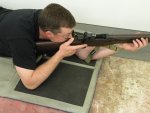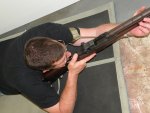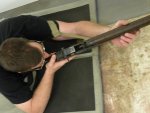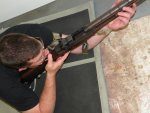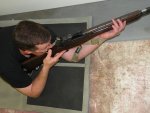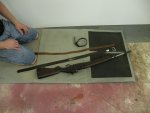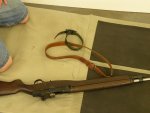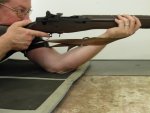Now, remember where your forward hand was positioned on the forend of the rifle, when the butt of the rifle was firmly lodged into your shoulder. It's just a little tricky here, but the key is to place your forward hand on the stock at the same place as where you were able to achieve good butt contact with your shoulder.
FROM THIS POINT, YOU'LL ADJUST THE SLING LENGTH UNTIL THE SLING SUPPORTS THE WEIGHT OF THE RIFLE, AND YIELDS A REASONABLY TIGHT, YET COMFORTABLE "WELD" OF THE BUTT INTO THE SHOULDER. The forward hand stays in the same position as from that original mark. Maybe a half-inch further out, but not closer in!
FROM THIS POINT, YOU'LL ADJUST THE SLING LENGTH UNTIL THE SLING SUPPORTS THE WEIGHT OF THE RIFLE, AND YIELDS A REASONABLY TIGHT, YET COMFORTABLE "WELD" OF THE BUTT INTO THE SHOULDER. The forward hand stays in the same position as from that original mark. Maybe a half-inch further out, but not closer in!

